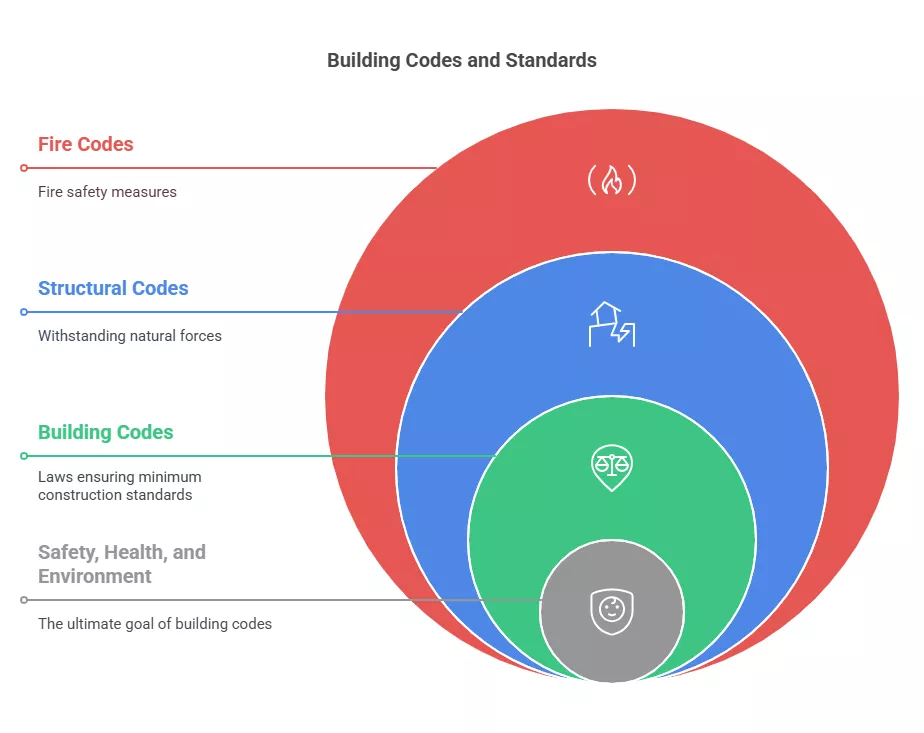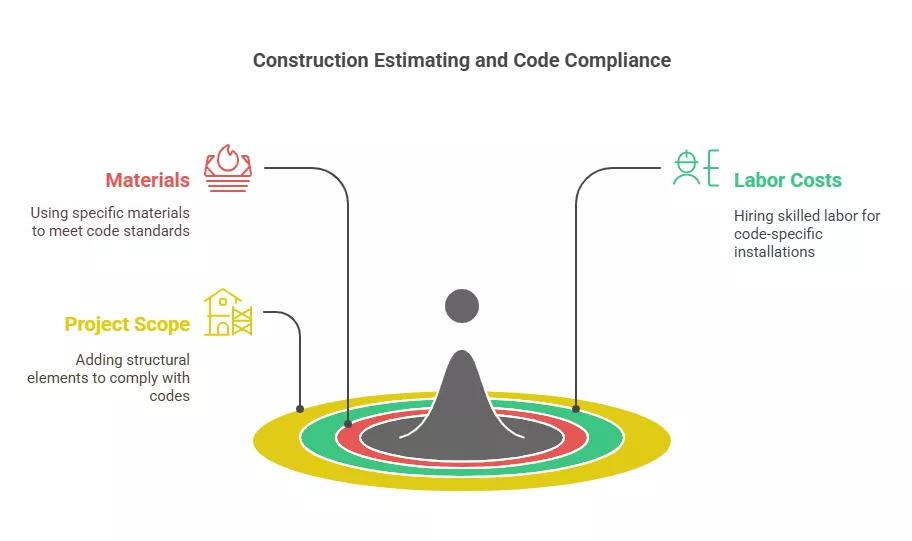Ranked #1 in Accurate and Reliable Estimation Services
A Fastest Turnaround 24 Hours!
Ranked #1 in Accurate and Reliable Estimation Services
A Fastest Turnaround 24 Hours!
Ranked #1 in Accurate and Reliable Estimation Services
A Fastest Turnaround 24 Hours!
Ranked #1 in Accurate and Reliable Estimation Services
A Fastest Turnaround 24 Hours!

Have you ever experienced a construction project where unexpected issues with building codes delayed progress? I’ve seen this happen more than once, and it can be frustrating for everyone involved. One thing I’ve learned from working in construction estimating is that accurate cost predictions are not just about materials and labor—they’re also about making sure the project complies with local and national building codes.
In this article, I’ll share how construction estimating plays a crucial role in keeping projects compliant with building codes and standards. Whether you’re a project manager, contractor, or estimator, I’ll explain the key factors that help you stay on track with your budgets and regulations, saving you time, money, and stress.
When we talk about construction estimating, we’re referring to the process of predicting the costs involved in a project. This includes everything: from the cost of materials like wood or steel to labor and equipment. It’s all about creating a budget that covers all expected costs—while avoiding the potential for hidden surprises.
For example, in my experience, estimates aren’t just about adding up the cost of materials. We need to think about the building codes too. Codes can impact how much we pay for certain materials (like fire-resistant products) or the level of skill required from the workers. Estimating accurately requires understanding all these layers, so nothing gets missed.Read a detailed article about what is construction estimation.
But what exactly are building codes? They are laws that establish the least requirements pertaining to a structure’s work, including its design. Such health and safety codes are focused on protecting the persons, as well as the place’s environment, in which construction work is to be performed. The codes encompass every detail pertaining the buildings from their architectural designs, to their engineering works.
When I worked on a project that required energy-efficient building materials, the extra cost for things like high-performance windows and insulation was necessary, but it helped us meet the local energy codes and avoid future issues.
From my experience, I can tell you that construction estimating isn’t just about crunching numbers. It’s about making sure the estimate includes all the costs for meeting building codes. If your estimate doesn’t factor in these codes, you might end up with a budget that’s too low and hit roadblocks later.
For instance, during one project, the fire safety codes required us to use specific materials for fireproofing, which added significant costs to the estimate. We had to adjust our budget early on to account for these code requirements, which helped prevent delays down the road.

The particular challenges I have worked within the estimation details of a construction project, include keeping up with the constantly evolving building codes. One of the primary issues is the code’s incremental development; updates can be easy to overlook. For instance, when a local authority updated its energy efficiency standards during a project, we had to re-estimate the costs of implementing new energy-saving windows, which was a considerable budgetary increase.
Here are a few challenges I’ve encountered:
Luckily, modern technology has made estimating for building code compliance much easier. Estimating software like Procore and Buildertrend allows us to input specific codes and requirements, so we can track changes and adjust estimates accordingly.
I’ve found that BIM is incredibly helpful in visualizing the project while ensuring code compliance. With BIM, estimators can see how certain design elements (like fire escapes or load-bearing walls) impact costs, and ensure the design meets all necessary codes.
AI is starting to make an impact in estimating as well. Some tools use AI to automatically adjust the estimate when building codes change or to identify potential compliance issues early, helping to prevent costly mistakes later on.
I’ve seen projects hit major delays or face huge fines simply because the team didn’t fully account for the costs of code compliance. Here’s what can happen when building codes aren’t followed:
For instance, on one project, we had to completely rebuild sections of the foundation to meet updated seismic codes—something we missed in the original estimate. It ended up costing thousands of extra dollars.
To avoid these risks, here are some practices I’ve found helpful in ensuring compliance while estimating:
In my experience, construction estimating is not only about calculating costs—it also entails compliance with building codes. Balancing legal impacts on budgetary constraints, utilizing appropriate methodologies, and keeping abreast with changes are essential in control on scope and budget interfaces.
Informing yourself, whether you are a manager or an estimator, about construction estimating fundamentals and the interplay of codes will shield your projects from delays, unplanned expenses, and serious safety issues. Preparedness is your best guarantee for successful and compliant projects.
1 Comment
Rochelle1557
Good